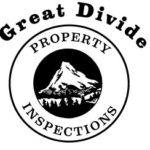RADON
Testing offered, see PRICING page.
What is Radon Gas?
Radon is a naturally occurring radioactive gas with no color, odor or taste and is chemically inert. It comes from the breakdown of uranium. As the uranium molecule decays to form stable lead, a process taking many, many years, it changes from one radioactive element to another in a sequence known as the Uranium Decay Cycle. Partway through this cycle, the element radium becomes radon which as a gas moves up through the soil to the atmosphere and into the air we breathe.
Is Radon a Problem in Colorado?
Excessive radon levels have been found in all of the 50 states. In Colorado, approximately 50% of the homes have radon levels in excess of the EPA recommended action level of 4 picoCuries per liter (pCi/L).
How can Radon Damage My Health?
Radon is estimated to cause about 21,000 lung cancer deaths per year. The Surgeon General has warned that radon is the second leading cause of lung cancer in the United States today. Only smoking causes more lung cancer deaths.
How Does Radon Enter My Home?
- Spaces between basement walls and slab
- Cracks in foundations and/or walls
- Openings around sump pumps and drains
- Constructions joints and plumbing penetrations
- Crawl Spaces
- Using well water with high radon concentrations
Radon in Condominiums
The EPA recommends that anyone who lives on the third floor or below in a condo test their home for radon. I encourage owners to work with their association to conduct commercial level tests within their development. Results from a single unit may or may not be representative of the building . Mitigation may fall under the associations umbrella and could require action/approval by the association.
For more information on Radon:
